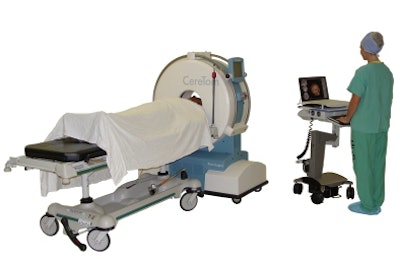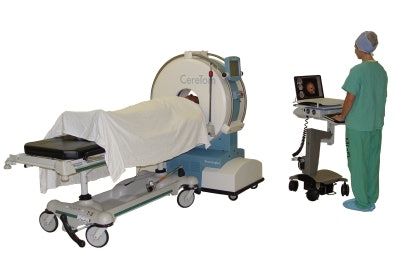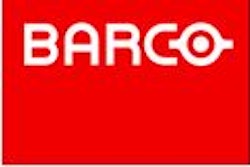
When asked about the motivation to start NeuroLogica, Eric Bailey recalls how a stroke left a grandfather he admired in a debilitated state for 10 years. The event, said the president of the Danvers, MA-based CT scanner designer and manufacturer, "had a profound impression on me."
Bailey also lost his 26-year-old brother to a head injury suffered in an auto accident. A CT scan could have saved his brother's life and perhaps improved the quality of life for his grandfather.
Today, Bailey, CEO Bernard M. Gordon, and vice president of engineering Andy Tybinkowski are among 30 employees at NeuroLogica about to launch CereTom, a compact helical CT scanner for head and neck scans.
If those names sound familiar, they should. Gordon has been an influential contributor to CT development and design since 1975. He is perhaps best known as the former chairman and CEO of Peabody, MA-based Analogic. He retired once as CEO of the imaging technology company in 2001, only to return temporarily a year later, and leave the company again in the spring of 2004 to help found NeuroLogica. Gordon remains a director at Analogic, and, until recently, was the company's largest single shareholder.
Bailey was Analogic's chief CT engineer and helped developed medical CT technology, as well as CT for use in explosive detection systems. Tybinkowski is a former chief engineer at Analogic. Gordon estimates that about half of NeuroLogica's engineers came from Analogic, bringing with them dozens of years of CT design experience.
NeuroLogica's CereTom
CereTom generates up to eight slices per revolution for head and neck scanning in a 25-cm field-of-view. The system's portability is achieved, in part, through its battery, which recharges in any 90- to 270-volt outlet and has enough power to image four to eight patients over a four-hour span. The scanner also sports a wireless image transfer system, which uses an Ethernet link to enable data processing from the point of care to the company's Clarus wireless workstation. The scanner also utilizes Voxar 3D imaging technology from Barco of Kortrijk, Netherlands.
 |
| CereTom is a 700-lb battery-powered scanner that can be moved to the point of care and transmit wireless images back to a laptop-based workstation. |
CereTom is 29 inches in length, slightly more than 5 ft tall and about 4 ft wide. It weighs approximately 700 lb, about half the weight of a portable C-arm. Its amenities include CT perfusion software, multiplanar reconstruction (MPR) capabilities, and 3D maximum intensity projection (MIP) software for the viewing of CT angiography via a 20-second head and neck scan. NeuroLogica expects to add surgical software to CereTom next year.
The CT scanner received FDA clearance in July, and NeuroLogica currently is working toward its CE Mark to sell the scanner in Europe. CE Mark approval could come before the end of the year. The first CereTom installations should take place in November or December, Bailey said.
NeuroLogica will be ramping up its public profile later this month with its debut at the annual RSNA meeting in Chicago.
Ramping up production
NeuroLogica plans to market the CT scanner to imaging centers; dental, maxillofacial, and other office-based practices; and to hospitals for use in ERs, ICUs, ORs, and interventional suites. CereTom will be distributed in the U.S., as well as in developing countries, where full-scale CT scanners are beyond the financial means of many healthcare providers.
With CereTom, Bailey maintains that a healthcare facility could shift its head and neck scans to the compact portable system, add capacity, and save money by not having to buy a conventional CT scanner and outfit an entire room. "Everything is priced less than $300,000," he added.
CT experience
Given the background of many NeuroLogica employees, Gordon is quick to emphasize the originality of the company's technology. "There is nothing in (CereTom) that is derived from or based on any Analogic designs whatsoever, for a number of reasons," he said. One reason, he said, is that many observers did not think it was possible to achieve adequate CT image quality using the scanner's 1,000-watt x-ray tube. X-ray tubes in conventional CT scanners are as large as 80,000 watts and require large cooling systems.
"We are using something that would be akin to a dental x-ray tube or airport x-ray tube," Bailey said. "It doesn't have any moving parts and sometimes people can get up to 10 years of life on a tube like this."
Also, while a conventional CT scanner is designed to operate within a temperature range of plus or minus 5 degrees, Gordon noted that the air-cooled CereTom has been tested and performed in a range of 40 degrees to 0 degrees Centigrade.
NeuroLogica also is wasting no time in starting development of a second product, a specialized SPECT scanner for functional and anatomical brain imaging. The company intends to have the system, called NeuroFocus, commercially available by late 2006.
"It will look like a twin of the CereTom," Bailey said. "It will have the same mechanism and move on the floor."
NeuroLogica has its headquarters in an 80,000 sq ft building, and, as full production is reached, Gordon expects its labor force to expand to 70 to 80 employees. "In order to manufacture CT machines efficiently, you need to make at least one machine per day," he said. "We hope to be up to that range by the end of next year. We think our company should break even by the middle of next year."
Gordon noted that NeuroLogica is "adequately financed. We have not set up here on a shoestring. A large part of $10 million has gone into the design of this machine."
By Wayne Forrest
AuntMinnie.com contributing writer
November 7, 2005
Copyright © 2005 AuntMinnie.com




















